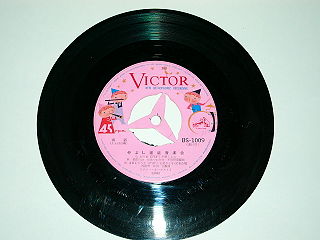
Where mp3 has a clutter of special little pre-specified data-structures to pick from, Vorbis and Opus in Ogg files uses a nice, simple “(fieldname)=(text)” format. Well…except for one thing.
“Album art” isn’t text. It’s not sound, either. Now, the most-technically-correct way to deal with this sort of thing in an Ogg file would be to have the “album art” images as their own separate media “stream”, sort of like a “movie” file where the “video” is one or more still images. This is kind of an inconvenient kind of thing for audio-only players to deal with I guess, and is different from how the more well-known mp3 did it, so a workaround was devised.
First, let’s get this out of the way: NO, do NOT just base64-encode a jpeg file and cram it into the metadata. Early on, doing this in a field named “COVERART” was one way people tried to to cram album art into audio-only Ogg files. However, few if any media players ever bothered to implement using that field, and in addition this method is even less capable than the “APIC” structure that mp3 uses for album art. The correct way to include “album art” images in an Ogg Vorbis (or Opus) file is with the somewhat unintuitively-named METADATA_BLOCK_PICTURE field.
The reason for this strange name is because that’s what the “album art” structures in FLAC files is called, and this precise same binary structure is what’s used for “vorbiscomments” (again, Ogg Vorbis AND “.opus” [Opus in Ogg]) album-art. Since the binary structure is exactly the same, that means any media player that can handle “album art” in .flac files can use exactly the same pre-existing code to also handle album art in Ogg files.
The difficulty is of course that this is still “binary” (non-text) data, so this whole structure (not just the contents of the image file) gets base64 encoded. Annoyingly, I’ve had a hard time finding anything that properly supports generating this structure. The encoder utility for flac actually has a built-in “-picture” option that lets you specify picture files (along with the rest of the data structure, where it might not be auto-detectable or where you don’t want the defaults) easily when making the file in the first place, but neither the oggenc encoder for Ogg Vorbis nor opusenc for Ogg Opus had this option, nor did the “vorbiscomments” utility used for adding or modifying metadata in pre-made Ogg Vorbis files. There are a few graphical utilities (such as kid3) that can properly encode a single piece of “album art” for a file, but only with some hard-coded defaults. Also, they still don’t support Opus files (pending a long-delayed release of taglib version 1.9). This makes embedding album-art during automated processing a problem, as well as the issue of including multiple embedded images, which is also perfectly valid (not only in .flac, .ogg, and .opus but in .mp3 as well) with a couple of minor restrictions.
Some help with this is now available, though. It turns out that the next release of opusenc will actually also include a flac-like “-picture” function, which will make that easier, but still doesn’t solve the case for Ogg Vorbis. Also, I was able to find a perl implementation of generating the METADATA_BLOCK_PICTURE structure and then base64-encoding it, which at a glance looks like it ought to work. Hardcore pythonistas could probably code up something equivalent using mutagen as long as you don’t mind being stuck on Python 2.x. And now…I have a correctly working PHP implementation, and a script that can be run either from a web server (using a form to upload the picture and fill in the data) or from a command-line prompt. Anybody want it?